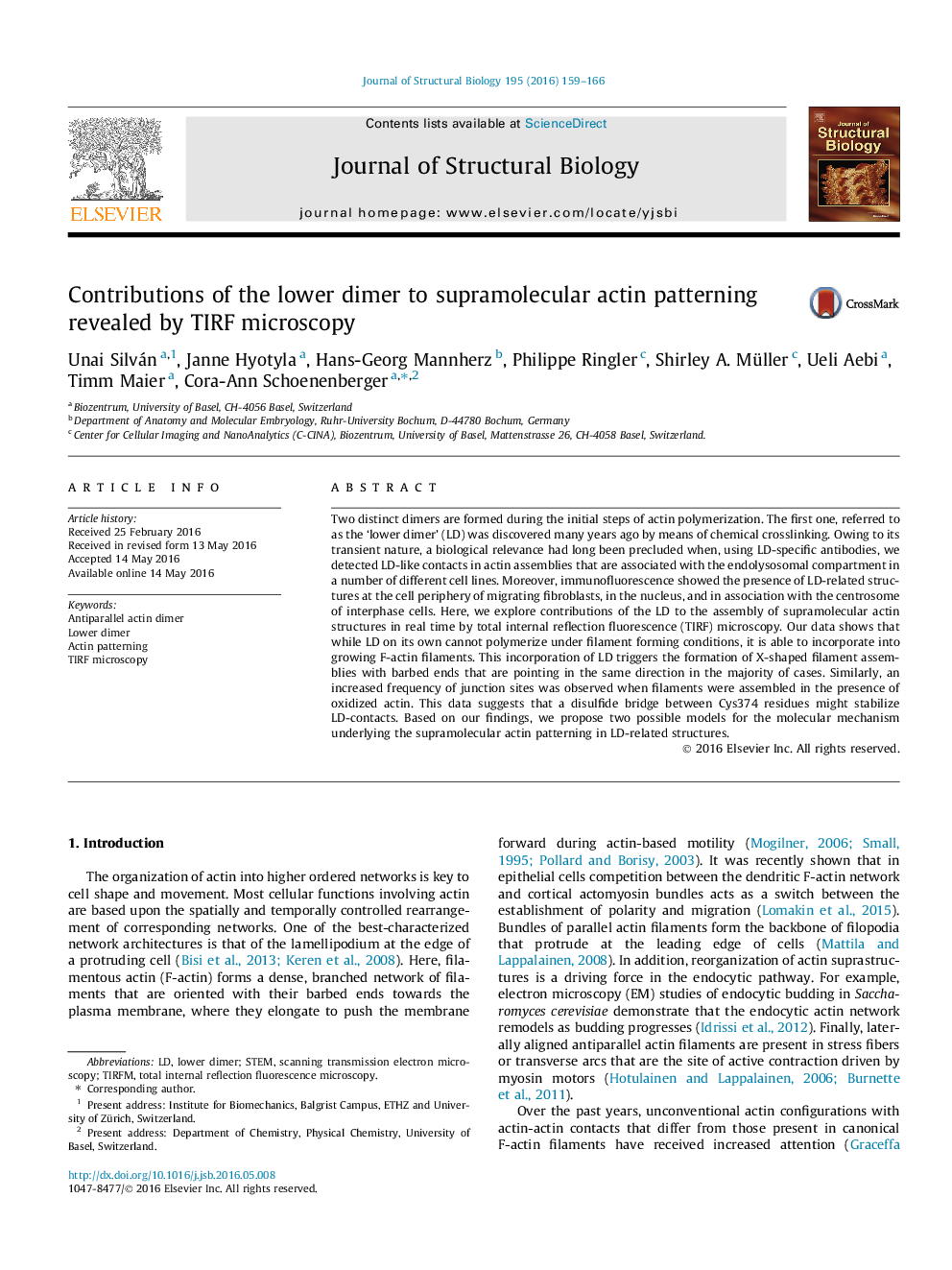| Article ID | Journal | Published Year | Pages | File Type |
|---|---|---|---|---|
| 2828408 | Journal of Structural Biology | 2016 | 8 Pages |
Two distinct dimers are formed during the initial steps of actin polymerization. The first one, referred to as the ‘lower dimer’ (LD) was discovered many years ago by means of chemical crosslinking. Owing to its transient nature, a biological relevance had long been precluded when, using LD-specific antibodies, we detected LD-like contacts in actin assemblies that are associated with the endolysosomal compartment in a number of different cell lines. Moreover, immunofluorescence showed the presence of LD-related structures at the cell periphery of migrating fibroblasts, in the nucleus, and in association with the centrosome of interphase cells. Here, we explore contributions of the LD to the assembly of supramolecular actin structures in real time by total internal reflection fluorescence (TIRF) microscopy. Our data shows that while LD on its own cannot polymerize under filament forming conditions, it is able to incorporate into growing F-actin filaments. This incorporation of LD triggers the formation of X-shaped filament assemblies with barbed ends that are pointing in the same direction in the majority of cases. Similarly, an increased frequency of junction sites was observed when filaments were assembled in the presence of oxidized actin. This data suggests that a disulfide bridge between Cys374 residues might stabilize LD-contacts. Based on our findings, we propose two possible models for the molecular mechanism underlying the supramolecular actin patterning in LD-related structures.
